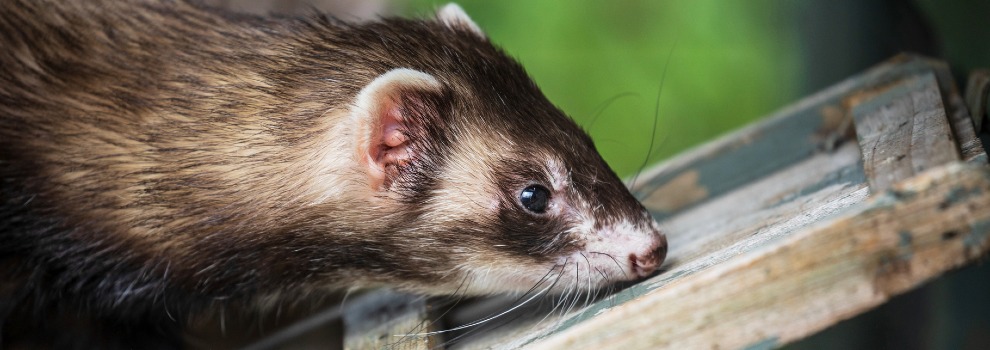- Find a Pet
- Advice and Welfare
- Ways to Give
- Get Involved
- What We Do
- Search
- My RSPCA
- Report a concern
- Sponsor
-
Colour modeVivid Calm
- Home
- Advice and welfare
- Pets
- Ferrets
Ferrets
Ferrets (Mustela putorius furo – which translates as ‘stinky raging thief’) belong to the carnivore family of the Mustelidae and their closest ancestor is the European polecat. Despite their rather misunderstood nature, they have recently become very popular pets for their charming and cheeky characters, and inquisitive and playful nature. They can learn to see humans as companions and form a strong bond with their owners.
Knowing more about the biology and behaviour of ferrets can help you to understand them. Read the facts below to find out more about these furry creatures.

Ferret fact file
- Ferrets are domesticated animals. They’re likely to have descended from the wild European and Steppe polecats.
- Ferrets belong to the carnivore family of the Mustelidae. As well as polecats, this is the same mammal family that weasels and badgers belong to.
- Though wild ferrets are thought to be largely solitary, domestic ferrets are sociable and usually enjoy living in groups, although this does depend on the individual animals.
- Ferrets enjoy exploring. They’re very curious and will test out most items with their mouths. In the wild, mustelids spend a large proportion of their active time foraging in wide home ranges and ferrets are motivated to take part in a variety of activities in a large area.
- Ferrets are predators and have ancient roots in hunting – rodents, rabbits, hares, hedgehogs and reptiles are amongst the prey of their wild polecat ancestors. They rely on their senses of smell, taste and hearing as their eyesight is quite poor.
- Paintings of animals thought to be ferrets have been found on the walls of Egyptian tombs.
- Ferrets like sleeping. A healthy ferret may sleep between 18 and 20 hours a day!
- Ferrets are playful and intelligent, and need mental and physical stimulation. Generally, as in all young hunters, play behaviour of young ferrets helps to develop motor and social skills, learning and predatory behaviours and they can play constantly (when they’re awake!).
- Ferrets use a range of methods to communicate. As well as using smell to hunt, ferrets use scent to communicate with each other. They can tell if another ferret is male or female, strange or familiar and if the mark was left recently or a day ago, just by sniffing a mark left by the other ferret’s bottom. This is particularly useful for mating and defending territory in the wild. Ferrets also use postures and vocalisations to indicate how they’re feeling.
- Ferrets are vocal. An excited ferret will make a ‘dook’ sound, also called chuckling. They may also produce a bark-like sound and sometimes do this if they are afraid. Continuous screaming is an indication of being highly alert in the presence of danger.
- Ferrets are flexible, with a sleek, elongated body and large vertebrae which allow them to move in confined spaces and turn round in narrow tunnels.
- Ferrets are colourful! There are five main colours in domesticated ferrets: fitch (the traditional polecat markings), albino (also called the English ferret), silver, sandy and dew, all a slight variation in nature.
- Humans can infect ferrets with the flu and vice versa! Ferrets are highly susceptible to several strains of the human influenza virus.
-
Ferrets live for around six years, but up to 10 years if in good health.
Find out more about caring for pet ferrets in our expert-reviewed pet care information, including their environment, diet, behaviour, company and health and welfare.
Adopt a ferret from the RSPCA
Ready to welcome ferrets to your life? Then why not search for ferrets for rehoming from the RSPCA!



